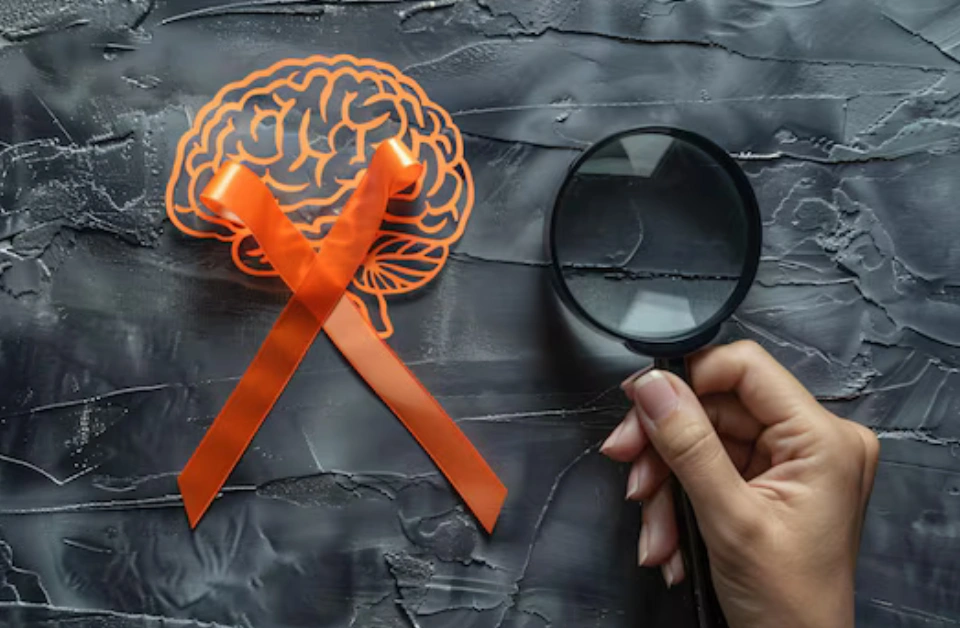
How to Develop and Evaluate a Pro Instrument?
June 25, 2020
Structure for Writing a Scientific Research Proposal in Biotechnology
July 2, 2020Clinical Psychology: Studying Disorders’ History, Causes, Treatment
Table of Content
- What do we think? What do we feel? How do we react to a particular situation?
- How do we define it?
- How to examine whether someone is a patient of mental illness or not?
- Classification
- The main classes of mental illness are
- Cause of psychological disorder
- Treatment
- The categories of treatment are as follows
- Reference
- Related Posts
A literature review can be considered as a published material in a biomedical research subject, a specialized area with certain time duration, and it also provides review books, scholarly articles, and related to research publication. A literature review writing can be a just simple outline of the source, which helps to recollect all the given information. It can analyse old materials or links with new analysis. Literature review articles may incorporate in many useful reports that keep them update with current fields, and literature review helps the most appropriate and applicable.
What do we think? What do we feel? How do we react to a particular situation?
All these are related to our mind. Yes, our emotions, manifestation of behavior, emotions, and feelings are related to our mind and the scientific study of our mind is called Psychology.
This scientific study has several branches of which clinical psychology is very important. This is the broad branch of psychology that focuses on the diagnosis and treatment of mental, emotional, and behavioral disorders.This is also knownas experimental or behavioral science.
Psychopathology is a common term in the study of clinical psychology.
How do we define it?
This is the in-depth Study of Mental health.orbehavioral disorder which causes distress in several domains of life. This study includes symptoms, behaviors, causes, development, treatment, etc.
How to examine whether someone is a patient of mental illness or not?
For this, a comprehensive assessment or systematic examination of History is required.
This assessment consists of two sections of which the first one is a section of History that includes how the present symptoms have evolved, review of past treatments, past and present medical conditions, family history of psychiatric problems and treatment, personal history of the patient.
Let’s have a look at how to do a patient’s history examined systematically
Identification: Information about patient’s age and sex, mainly racial or ethnic information, and sometimes includes religious affiliation.
Chief Complaint: a voice recording of the patient that describes why he or she seeks treatment.
History of the Present Illness: a chronological description from when and how the symptoms have progressed. The character of the symptoms must be described in detail.
Past Psychiatric History: includes previous incidents and symptoms, treatment, etc.
Medical history: Medical history is also important because sometimes a person’s illness or major surgery may cause mental disturbances.
Family history: mental disorders can be genetic so family history may help to diagnose and proper treatment.
Personal History: it has a very significant role as it describes events throughout a person’s life.
Classification
In ancient ages, it was believed that unusual and strange behaviour was due to the possession of evil spirits. During the eighteenth and nineteenth centuries, physicians began to identify symptoms and classified them as a disease.
In the twentieth century, two new approaches were contributed by German physician Emil Kraepelin and Sigmund Freud which have major influences in the understanding and classification of psychopathology(Eldar, GOmez, & Hofmann, 2017).
The main classes of mental illness are
Mood Disorders:Includes disturbance of mood, this is divided into depressive and bipolar disorder.A new diagnosis of mood disorder has been reported among children and adolescents. These patients are having severe non episodic irritability with bipolar disorder. This type of disorder is called Disruptive mood dysregulation disorder (DMDD)(Tourian et al., 2015).
Anxiety Disorders:These are characterized by excessive worry about some imaginary outcome,these may be general,social anxiety or panic disorder.
Obsessive-Compulsive Spectrum Disorders: These include trichotillomania (hair-pulling disorder),body dysmorphic disorder (BDD), hoarding disorder, and excoriation (skin-picking) disorder.
Trauma and Stressor Disorders (Including Dissociative Disorder): These occur due to guilt, rage, and shame, stressful events, etc.
Somatic Disorders:Acute pain that does not have any anatomical or neurophysiological origin is labeled as psychopathological(Katz, Rosenbloom, & Fashler, 2015).The characteristics of this disorder are anxiety or distress and symptoms are pain or fatigue.
Feeding and Eating Disorders: These disorders affect the normal food habits that impair physical health and also psychosocial functions.
Sexual disorder: This is distorted sexual behavior which is very difficult to differentiate from normal sexual behavior.
Schizophrenia Spectrum and Other Psychotic Disorders:This is a very complicated syndrome affecting 1% of the population.
Personality Disorders:These orders are related to a persistent pattern of behavior, emotions, etc and these affect social relationships.
Sleep-Wake Disorders:This has been reported that up to 60% of adults are suffering from sleep problems due to different stress, lifestyle, physiological conditions etc. Most of them remain undiagnosed and untreated(Demir et al., 2015).
Neurodevelopment disorders: Usually begin in infancy or childhood. Examples are attention-deficit/hyperactivity disorder (ADHD) , autism spectrum disorder, and learning disorders.
Neurocognitive/Organic Disorders:The two main categories of these disorders are Delirium and Dementia that occurs due to brain injury. Impaired consciousness and cognition are the main characteristics of Delinium. Symptoms of Dementia is a continuous deterioration of brain function.
Cause of psychological disorder
It is very difficult to detect the exact cause of psychological disorders, but several factors influence their development. The main factors are
- Inherited traits: psychological disorder is common in people who have relatives having the same problem. It can be inherited from relatives.
- Environmental exposures before birth: Exposure to some factors like environmental stress, toxins, alcohol, drugs can cause mental illness.
- Brain chemistry: Neurotransmitter is a chemical that transmits signals from one part to another part of the brain. Impairment of this network system changes the function of the nerve system and causes mental depression and mental disorder.
Analyzed Data has been suggested at the highest rate of premature death due to both natural and unnatural causes. The death rate from unnatural causes is significantly high in the case of schizophrenia and major depression. This rate has been increased for mental retardation and epilepsy. It is estimated that 14.3% of deaths all over the world i.e. approximately 8 million deaths per year happen due to mental illness(Walker, McGee, & Druss, 2015).
Treatment
Treatment depends on the type of psychological disorder. Treatment from a primary care provider may be sufficient for a patient of mild mental illness. But in severe mental illness like schizophrenia team approach is very much important to meet psychiatric, medical and social needs.
The categories of treatment are as follows
- Medications: psychiatric medication never cures mental illness but improves symptoms. The medications are Antidepressants, Anti-anxiety medications, Mood-stabilizing medications., Antipsychotic medications.
- Psychotherapy: this is the talking therapy through which one can learn his or her moods, thoughts, feelings, behavior, etc. It is effective to gain knowledge about stress management skills.
- Brain-stimulation treatments: These include deep brain stimulation and vagus nerve stimulation. repetitive transcranial, electroconvulsive therapy, magnetic stimulation. These may be effective in some severe cases.
- Hospital and residential treatment programs: in case of severe condition patients have to be admitted to hospital or kept under residential care.
Reference
- Demir, A. U., Ardic, S., Firat, H., Karadeniz, D., Aksu, M., Ucar, Z. Z., … Itil, O. (2015). Prevalence of sleep disorders in the Turkish adult population epidemiology of sleep study. Sleep and Biological Rhythms, 13(4), 298–308. Retrieved from
- Eldar, S., GOmez, A. F., & Hofmann, S. G. (2017). Psychopathology and classification. In International perspectives on psychotherapy (pp. 1–33). Retrieved from
- Katz, J., Rosenbloom, B. N., & Fashler, S. (2015). Chronic pain, psychopathology, and DSM-5 somatic symptom disorder. The Canadian Journal of Psychiatry, 60(4), 160–167. Retrieved from
- Tourian, L., LeBoeuf, A., Breton, J.-J., Cohen, D., Gignac, M., Labelle, R., … Renaud, J. (2015). Treatment options for the cardinal symptoms of disruptive mood dysregulation disorder. Journal of the Canadian Academy of Child and Adolescent Psychiatry, 24(1), 41. Retrieved from
- Walker, E. R., McGee, R. E., & Druss, B. G. (2015). Mortality in mental disorders and global disease burden implications: a systematic review and meta-analysis. JAMA Psychiatry, 72(4), 334–341. Retrieved from
Table of Content
- What do we think? What do we feel? How do we react to a particular situation?
- How do we define it?
- How to examine whether someone is a patient of mental illness or not?
- Classification
- The main classes of mental illness are
- Cause of psychological disorder
- Treatment
- The categories of treatment are as follows
- Reference
- Related Posts





